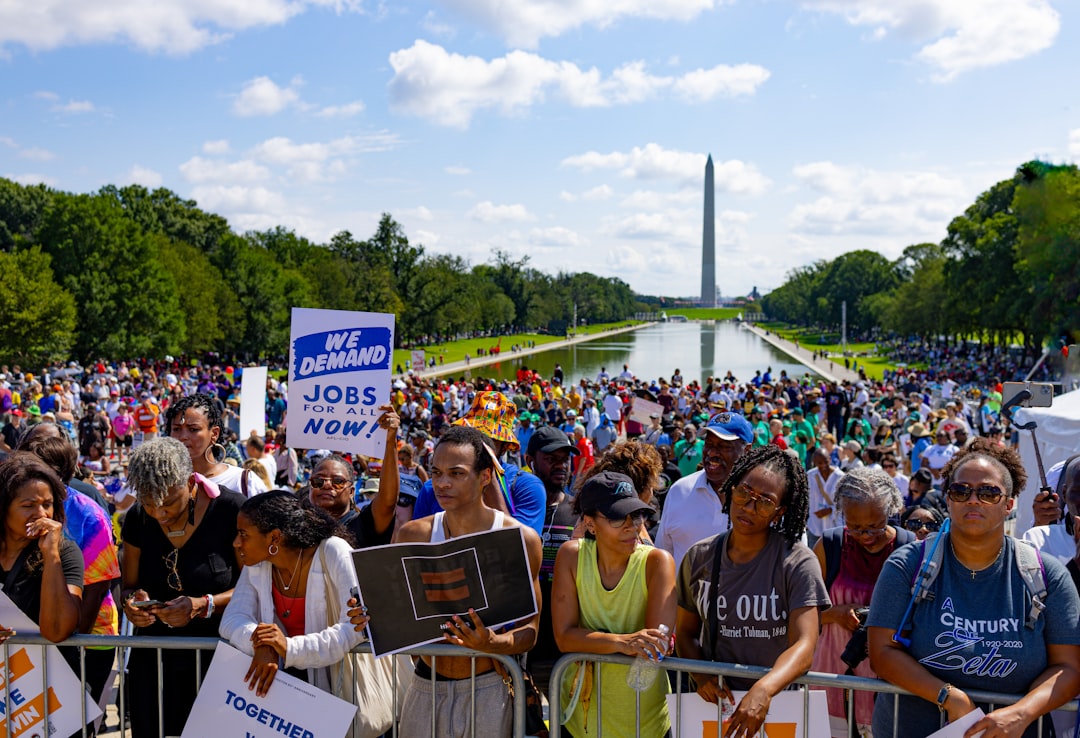Medicare, a vital program established in 1965, serves as a cornerstone of healthcare for millions of Americans aged 65 and older, as well as certain younger individuals with disabilities. As you navigate through the complexities of the U.S. healthcare system, understanding Medicare’s role becomes essential, not only for those who rely on it but also for the broader implications it has on the federal budget.
The program is funded through a combination of payroll taxes, premiums, and general revenue, making it a significant component of federal spending. As you consider the importance of Medicare, it becomes clear that its financial sustainability is crucial for both beneficiaries and the overall economy. The significance of Medicare extends beyond individual health outcomes; it plays a pivotal role in shaping the federal budget.
With healthcare costs continuing to rise, Medicare’s expenditures have become a focal point in discussions about fiscal responsibility and budgetary constraints. As you delve deeper into the intricacies of Medicare’s funding and expenditures, you will uncover how this program not only affects the lives of millions but also influences national economic policies and priorities.
Key Takeaways
- Medicare is a crucial component of the federal budget, providing healthcare coverage for millions of Americans.
- Over the years, Medicare has had a significant impact on the federal budget, with costs steadily increasing.
- The current impact of Medicare on the federal budget is substantial, accounting for a large portion of government spending.
- Projections indicate that Medicare’s impact on the federal budget will continue to grow in the future, posing challenges for budget sustainability.
- Comparing Medicare’s impact with other government programs highlights its significant financial burden on the federal budget.
Historical overview of Medicare’s impact on the federal budget
To fully appreciate Medicare’s current role in the federal budget, it is essential to examine its historical context. When Medicare was first introduced, it aimed to provide affordable healthcare to seniors who often faced financial barriers to accessing medical services. Initially, the program’s costs were manageable, but as medical technology advanced and the population aged, expenditures began to rise significantly.
You may find it interesting to note that in its early years, Medicare accounted for a relatively small portion of federal spending, but over time, this changed dramatically. As you explore the historical trajectory of Medicare’s impact on the federal budget, you will see how various legislative changes and economic factors have shaped its evolution. The introduction of Medicare Advantage plans in the 1990s and the expansion of benefits under the Affordable Care Act are just a few examples of how policy decisions have influenced spending patterns.
Understanding this history provides valuable insight into the challenges and opportunities that lie ahead for Medicare and its role in the federal budget.
Analysis of Medicare’s current impact on the federal budget

Today, Medicare represents a substantial share of federal expenditures, accounting for approximately 15% of the total federal budget. As you analyze these figures, it becomes evident that the program’s financial demands are growing at an alarming rate. With an aging population and increasing healthcare costs, projections indicate that Medicare spending could reach over $1 trillion annually within the next decade.
This trend raises critical questions about fiscal sustainability and the potential need for reforms to ensure that Medicare can continue to serve its beneficiaries without placing an undue burden on taxpayers. In your examination of Medicare’s current impact on the federal budget, consider how rising costs affect not only government finances but also individual beneficiaries. Many seniors rely on Medicare for essential healthcare services, and any changes to the program could have far-reaching consequences for their access to care.
As you reflect on these dynamics, it becomes clear that finding a balance between maintaining quality care for seniors and managing federal spending is a complex challenge that policymakers must address.
Discussion of the projected future impact of Medicare on the federal budget
| Year | Projected Medicare Spending (in billions) | Percentage of Federal Budget |
|---|---|---|
| 2020 | 799 | 21% |
| 2025 | 1,200 | 25% |
| 2030 | 1,800 | 30% |
| 2035 | 2,500 | 35% |
Looking ahead, projections indicate that Medicare’s impact on the federal budget will only intensify. As you consider demographic trends, such as the aging baby boomer generation entering retirement age, it becomes apparent that the number of beneficiaries will continue to rise sharply. This demographic shift is expected to place additional strain on an already burdened system, leading to increased spending and potential funding shortfalls.
You may find it concerning that without significant reforms or adjustments, Medicare could consume an even larger share of federal resources in the coming years. Moreover, as healthcare costs continue to escalate due to advancements in medical technology and pharmaceuticals, the financial outlook for Medicare becomes increasingly precarious.
The projected future impact of Medicare on the federal budget underscores the urgent need for comprehensive discussions about sustainability and reform.
Comparison of Medicare’s impact on the federal budget with other government programs
When evaluating Medicare’s impact on the federal budget, it’s essential to compare it with other government programs. For instance, Social Security is another significant expenditure that competes for federal resources. While both programs are crucial for supporting vulnerable populations, their funding mechanisms and growth trajectories differ markedly.
As you analyze these comparisons, you may notice that while Social Security benefits are primarily based on earnings history, Medicare’s costs are driven by healthcare inflation and utilization rates. Additionally, consider how other government programs, such as Medicaid and veterans’ healthcare services, intersect with Medicare’s funding challenges. Each program has its own set of beneficiaries and funding sources, yet they all contribute to the overall landscape of federal spending.
By understanding these relationships, you can gain a clearer picture of how Medicare fits into the broader context of government expenditures and why addressing its financial sustainability is critical for maintaining fiscal balance.
Examination of potential reforms to Medicare to mitigate its impact on the federal budget

As you contemplate potential reforms to mitigate Medicare’s impact on the federal budget, several strategies come to mind. One approach could involve adjusting eligibility criteria or benefit structures to ensure that resources are allocated more efficiently.
Another avenue for reform lies in exploring innovative payment models that incentivize value-based care rather than volume-based services. By shifting focus from quantity to quality in healthcare delivery, you may find that overall costs can be contained while improving patient outcomes. Additionally, investing in preventive care and chronic disease management could lead to long-term savings by reducing hospitalizations and expensive interventions down the line.
Analysis of the political and economic implications of Medicare’s impact on the federal budget
The political landscape surrounding Medicare is complex and often contentious. As you analyze its impact on the federal budget, consider how different political ideologies shape perspectives on healthcare spending. For some policymakers, protecting Medicare is seen as a moral imperative; for others, addressing its financial sustainability is paramount.
This dichotomy creates challenges in reaching bipartisan solutions that can effectively address both concerns. Economically, Medicare’s impact extends beyond mere numbers; it influences job creation within the healthcare sector and affects overall economic growth. As you reflect on these implications, think about how changes to Medicare could ripple through various industries and communities.
The interconnectedness of healthcare spending with broader economic trends underscores the importance of thoughtful policymaking that considers both fiscal responsibility and social equity.
Discussion of the role of Medicare in addressing healthcare costs and access for seniors
Medicare plays a crucial role in ensuring that seniors have access to necessary healthcare services without facing exorbitant out-of-pocket costs. As you explore this aspect of the program, consider how it alleviates financial burdens for millions of older Americans who might otherwise struggle to afford medical care. By providing coverage for hospital stays, physician visits, and preventive services, Medicare helps maintain health equity among seniors.
However, despite its benefits, gaps in coverage still exist within Medicare that can lead to high out-of-pocket expenses for beneficiaries. As you examine these challenges, think about how addressing these gaps could further enhance access to care for seniors while also potentially reducing overall healthcare costs through early intervention and preventive measures.
Examination of the potential consequences of reducing Medicare’s impact on the federal budget
While some may argue for reducing Medicare’s impact on the federal budget as a means of achieving fiscal balance, it’s essential to consider the potential consequences of such actions. Reductions in funding or benefits could lead to increased out-of-pocket costs for seniors, ultimately limiting their access to necessary healthcare services. As you reflect on this scenario, consider how such changes could exacerbate health disparities among vulnerable populations.
Moreover, cutting back on Medicare could have broader implications for public health outcomes. If seniors are unable to afford necessary treatments or preventive care due to reduced coverage, you may find that overall health outcomes decline, leading to increased hospitalizations and higher long-term costs for both individuals and the healthcare system as a whole.
Analysis of public opinion and attitudes towards Medicare’s impact on the federal budget
Public opinion plays a significant role in shaping policy decisions related to Medicare and its impact on the federal budget. As you analyze survey data and polling results, you’ll likely find that a majority of Americans view Medicare favorably and believe it is essential for supporting seniors’ health needs. However, there is also growing concern about its long-term sustainability and potential impacts on future generations.
As you delve into public attitudes towards potential reforms or changes to Medicare funding, consider how these perspectives vary across different demographics and political affiliations. Understanding these nuances can provide valuable insights into how policymakers might navigate discussions around reforming Medicare while maintaining public support.
Conclusion and recommendations for addressing Medicare’s impact on the federal budget
In conclusion, addressing Medicare’s impact on the federal budget requires a multifaceted approach that balances fiscal responsibility with ensuring access to quality healthcare for seniors. As you reflect on this complex issue, consider advocating for reforms that promote efficiency within the program while safeguarding essential benefits for beneficiaries. Recommendations may include exploring innovative payment models that prioritize value over volume in healthcare delivery or implementing targeted reforms aimed at reducing wasteful spending without compromising care quality.
By fostering bipartisan dialogue around these issues and engaging stakeholders from various sectors, you can contribute to a more sustainable future for Medicare—one that honors its commitment to serving America’s seniors while also addressing pressing fiscal challenges.
The increasing costs of Medicare have significant implications for the federal budget, often leading to concerns about crowding out other essential programs. For a deeper understanding of how these dynamics play out in the context of federal spending, you can read a related article on this topic at How Wealth Grows. This article explores the financial pressures that Medicare places on the federal budget and discusses potential solutions to ensure sustainable funding for both healthcare and other critical services.
WATCH THIS! The Retirement Lie: Why Gen Z Will Pay for Boomers’ Golden Years
FAQs
What is Medicare?
Medicare is a federal health insurance program for people who are 65 or older, certain younger people with disabilities, and people with End-Stage Renal Disease (permanent kidney failure requiring dialysis or a transplant).
How does Medicare affect the federal budget?
Medicare is a significant portion of the federal budget, accounting for a large portion of federal spending on healthcare. As the population ages and healthcare costs rise, the cost of Medicare is expected to continue to grow, putting pressure on the federal budget.
How does Medicare “crowd out” the federal budget?
The term “crowd out” refers to the idea that as Medicare spending increases, it may limit the amount of funding available for other federal programs and priorities. This can create challenges for policymakers in balancing the federal budget and addressing competing needs.
What are the implications of Medicare crowding out the federal budget?
The crowding out of the federal budget by Medicare can lead to difficult decisions about funding for other important government programs, such as education, infrastructure, and national defense. It can also contribute to concerns about the long-term sustainability of the federal budget and the national debt.
What are potential solutions to address the crowding out of the federal budget by Medicare?
Potential solutions to address the crowding out of the federal budget by Medicare include reforms to the program to control costs, such as changes to payment structures and incentives for providers, as well as efforts to promote more efficient and effective healthcare delivery. Policymakers may also consider broader reforms to the federal budget and fiscal policy to address the long-term sustainability of government spending.
